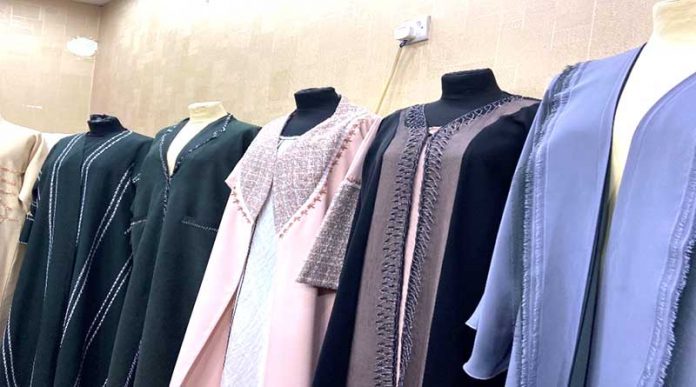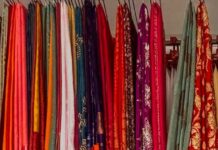By Shaikha Majid
Does fashion truly define who we are?
Cotton, velvet, nada, polyester, and crepe were once considered controversial fabrics to use but are now a source of empowerment for many Arab women. Within the Gulf region, tradition always meant black abayas, and colors refer to a never-ending contradiction. However, with the new generations, women have been more open to some changes, which are slowly becoming part of how they express their personalities. Tailors are now working on different fabrics to embrace the trends to turn them into new fashion designs.
After more than 13 years of women struggling to wear their favorite colors in abayas for fear of being judged, many have stepped forward to overcome this challenge by changing the word controversial into something possible.
According to Saudi-based journalist Layan Damanhouri, the modern trend of the colored abaya that began in Jeddah quickly became a “common scene in public life.”
Colored abayas were considered one of the biggest shifts in the modest fashion industry. Despite this, they have sparked an ongoing debate where people have criticized them as being too attractive to the eye, claiming that they oppose the main purpose of abayas in Islam, which stipulates covering a woman’s body. For this reason, women avoided the idea of wearing them in the past as they thought it might affect the way they connect with their faith and heritage by turning it more into an item of stylish clothing. So, they favored black as the ideal color for abayas.
As society evolves, today’s abaya grows into a voice of individuality and inspiration. In the UAE, Emirati women can still preserve that modesty element by wearing from an option of rainbow colors and creating their own signature styles. With the help of social media platforms, specifically Instagram and fashion influencers, women are selecting colored abayas. A new era of designs, garments and patterns constantly target different audiences but all fall under the trend of an abaya makeover. While many look at the picture of how these abayas are worn, a few know about the material used to produce some of these glamourous garments.
Tailors undergo a long journey of combining matching pieces to find the perfect harmony. For example, we can find a choice of satin with puff sleeves that can be styled as a maxi dress, a mix of polyester and cotton with a striped pattern to represent winter fashion, or even a silk fabric with soft feathers and pearl beads. In addition, Mohammed, a tailor who works in a shop in Halwan district in Sharjah, says that tie-dye abayas have become one of the most ordered abayas in the UAE; Generation Z finds them trendy. Nowadays, women in the UAE can customize their abaya designs to feel unique. In a world where changing times shape outfits, women now choose to define their sense of identity through fashion. Whether society is willing to accept these alterations or not, one cannot deny that these abayas might become the new norm.
Within new ideas for colored abayas, tailors are surprised by the number of abayas designed every month.
“I predicted that they would grab the attention of many women, but to design over 80 of these colored abayas in just a month, it feels unreal,” said Mohammed.
This also shows how these abayas are highly influencing the way women are choosing to define themselves in society.
He continued, “We are trying to breathe in life into the normal abaya, and I believe it is leading us in the right direction.”
However, there are always two sides to a story. Although some women in the UAE enjoy wearing colored abayas to shed light on how they identity themselves, others still find these new garments misrepresenting the culture and tradition.
Experimenting with the different colors, Mariam Alshamsi, a student at the Higher Colleges of Technology in Sharjah, is confident that these abayas are more than exceptional.
“Having the chance to wear a different color every day with a range of designs makes me feel positive; I think it’s a symbol of empowerment that unifies our society.”
Tradition is essential to preserve elements of culture, so will the trend of color last?
Amel Alshamsi, a working mother, values the traditional aspect of black abayas, “I believe that black abayas are a part of our tradition, and to preserve our tradition, we prefer to wear black where it resembles dignity, and I would not like to lose that feeling.”
Future predictions by tailors reveal that colored abayas in the UAE will pave the way for modest fashion to outshine and become the number one focus of local designers. Women can choose the fabrics, designs, colors and silhouettes by simply clicking on one button. Everything is possible, and with evolving technology, colored abayas will continue as a trend. It is evident that Arab, Emirati, and women from other nationalities in the UAE are wearing colored abaya with pride.
In the words of Mariam: “I believe that every person has the right to wear whatever they like as long as it represents their own personality.”


















